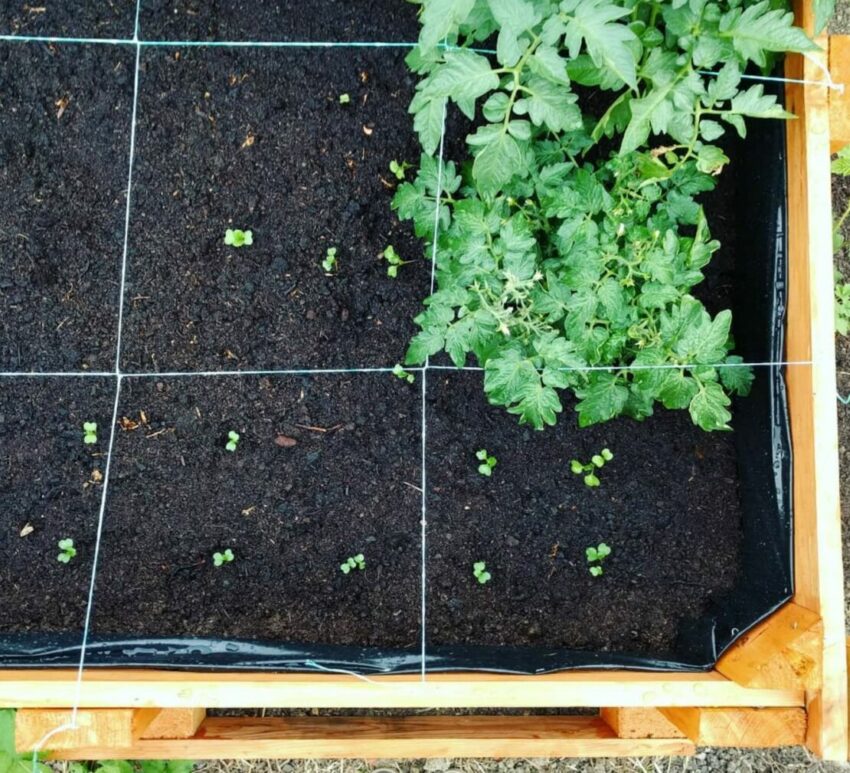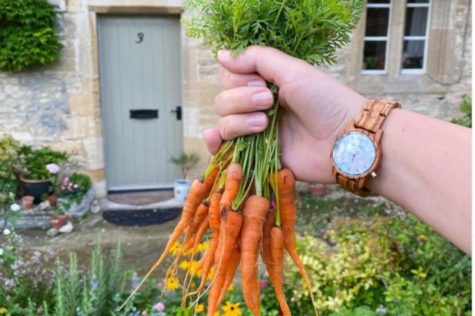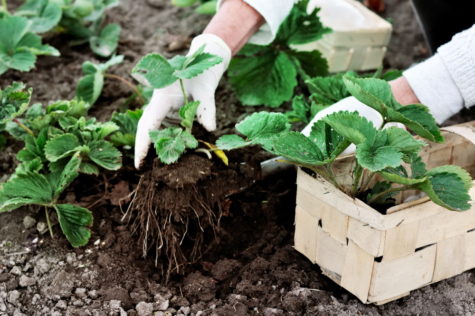As the growing season gets underway, we’ve spent a lot of time looking at different crops you can plant in your garden. From towering corn stalks, to hanging baskets of strawberries and tomatoes – we’ve got growing guides on all the best edible plants for beginners to grow.
If you’ve been browsing inspiration for your own vegetable patch, chances are you’ve come across those incredibly photogenic plots that are portioned out (rather satisfyingly) into smaller squares, with different leafy bits in each section. This is known as square-foot gardening – a technique that lots of gardeners swear by. So, what’s the deal with square-foot gardening? Let’s take a look!
What is square foot gardening?
Square-foot gardening is a method of intensive planting, based on growing things in squares of roughly 30cm (or, a foot, hence the name). The idea is to create an orderly gardening system that makes it easier to plant lots of vegetables in a given space.
The original square foot gardening was based on a raised bed of 4ft x 4ft (1.2m x 1.2m), divided into 16 squares. A different crop would be planted in each square, with either 1, 4, 9 or 16 individual plants, depending on the eventual size of the crop. For example, you might only have space for one bushy tomato plant, but sixteen radishes could grow quite comfortably in the same space. Organised, right?!

What are the benefits of square foot gardening?
Square foot gardening is a great way to maximise a limited space, and condensing your work area does reduce the effort needed to look after it, to some extent.
However, there are some clear advantages – for example: dense, tightly-packed foliage will make it much harder for weeds to grow in your beds. It will also make companion planting more effective at repelling pests and enhancing flavours.

Closely-grown crops will also retain more heat, boosting growth and offering some protection against cooler weather. The limited size of the vegetable beds also make it easier to cover them with fleece, netting or a cold frame.
Some things won’t change though, like crop rotation. It’s still important to replace your harvested vegetables with a crop from a completely different plant family. To prevent a build-up of pests and soil pathogens attracted to one type of plant.
Are there drawbacks to square foot gardening?
This intensive style of gardening doesn’t suit every type of crop, so if you’re keen to grow perennial produce, or larger vegetables (like squash, bushes or fruit trees), you’re better off using a different method.
Also, while a single 4×4 grid is practical for small gardens, it can be expensive and laborious to set up multiple grids to fill a bigger space. The soil itself is a considerable investment, and these intensive plots do need a lot of watering in summer.
How many crops can you grow in each square?
Once your square foot gardening grid is set up, it’s time to get planting. Here’s a (non-exhaustive) guide to give you an idea of how many of each type of crop you can grow inside your squares.
1 plant per square:
- Corn
- Cucumber
- Kale
- Lettuce (heads)
- Peppers
- Potatoes
- Tomatoes (staked)
4 plants per square
- Garlic (larger bulbs)
- Kohlrabi
- Leeks
- Lettuce (leaf)
- Onion
- Swiss chard
- Courgette
9 plants per square:
- Green beans
- Garlic (smaller bulbs)
- Peas
- Turnips
16 plants per square:
- Carrots
- Parsnips
- Radishes
Larger vegetables
If there are some larger crops that you want to grow, it’s possible to grow certain plants across two squares. These plants need the extra space to grow fully without crowding out other plants nearby:
- Broccoli
- Brussels sprouts
- Cabbage
- Cauliflower

More tips for square foot gardening:
In addition to growing the right number of crops in each square, there are a few bits of good advice that will help you grow a healthy vegetable patch.
- Maintain a variety of plants. We mentioned crop rotation earlier, but it really is important to keep a diverse selection of plants when you’re growing intensively. It helps to keep the nutrients in the soil balanced, and reduces the risk of one type of disease or pest building up.
- Think about height and light – keep tall-growing plants (like tomatoes or peppers) on the north side of your vegetable bed, so that shorter sun-loving crops can still get plenty of light. Alternatively, if you’re growing any of these shade-loving vegetables, grow them behind (to the north of) taller crops.
- Companion planting is about growing certain crops near each other to create benefits. For example, luring pests away from more valuable crops, or enticing more pollinators for a better harvest. Take a look at our more in-depth guide to companion planting (as well as some good crop pairings) to help you boost your yield and maintain a healthy vegetable patch in a crowded space.
Using the square foot gardening method is a practical and easy way to grow crops – perfect for small spaces and handy for beginners. Although there are some drawbacks in terms of initial efforts, the results are absolutely worthwhile once you get the hang of it!

Save this pin for later










Wondering what to use in a compost and vermiculite mix now that moss peat is being phased out in the uk?